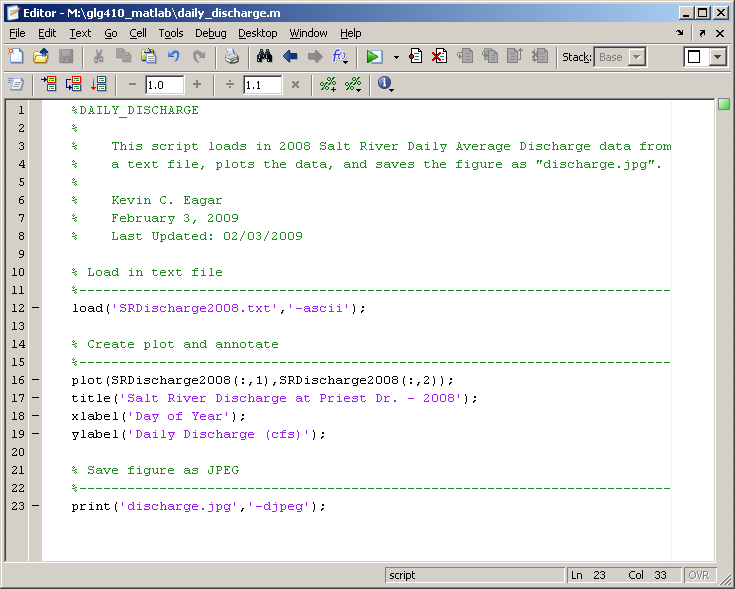Assignment: Analysis of Oklahoma Seismicity data
Over the last 5 years or so, the practice of wastewater injection in Oklahoma apparently has driven a great increase in seismicity. have a look at this link for some more information: Oklahoma earthquake information.
I have downloaded a list of earthquakes for you (and cleaned them up a bit for efficiency) for Oklahoma from the beginning of 2010 to the end of September 2015. They came from this composite earthquake catalog for the US. Here is a screen capture of the web interface and here is a map.
For this assignment, you will need to download the text file of the earthquake data here.
The columns in the text file are these:
year month day latitude longitude depth magnitude
Main tasks:
- Write a script to import the data
- Using a map of the US, pick out 5-10 lat long vertices along the outline of the state of Oklahoma and plot them as a line plot(lat,long, 'k-'), etc. on the following two plots (note that you may want to repeat the first and last point so that the polygon will close).
- Plot earthquakes as points, with Latitude on the vertical axis and Longitude on the horizontal axis
- Plot a histogram of number of earthquakes per decimal year (hints: a] decimal year = year + (month number/12) + (day number/365) and b] make a histogram with each year as a bin
You will build a web page for this assignment attach a link to it from your "Assignments" page.
Your site should contain:
- Map of earthquake locations (your latitude vs. longitude plot)
- Histogram of number of earthquakes per year
- A link to your M-file (Matlab script) used to make these plots
- Commentary on observations using these plots. Describe any spatial or temporal patterns you see in the data and comment on what it might mean in terms of evolving processes associated with earthquakes and injection in Oklahoma. How have the statistics (min, mean, max) of the magnitudes and depths, varied over time?
Grading Rubric:
- Web page for the assignment--5 points
- Earthquake location plot--10 points
- Histogram plot--10 points
- Matlab m-file (including comments)--15 points
- Commentary--10 points
Assignment is due Wednesday, October 14, 2015 by the beginning of class.
GLG410 Computers in Earth and Space Exploration
Last modified: October 7, 2015

